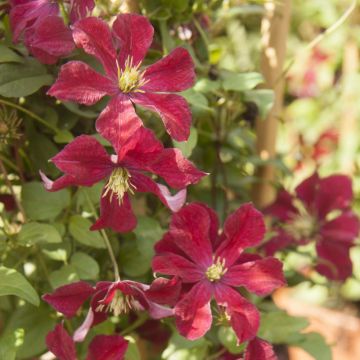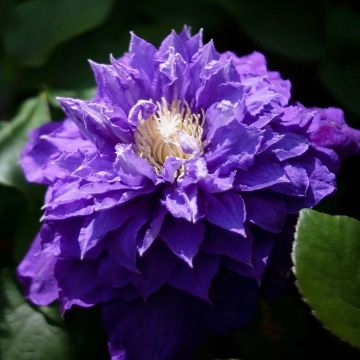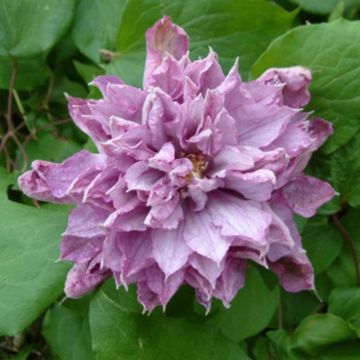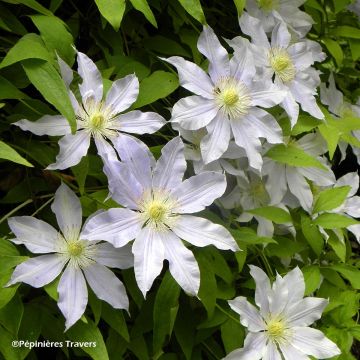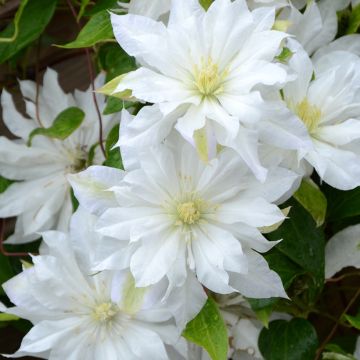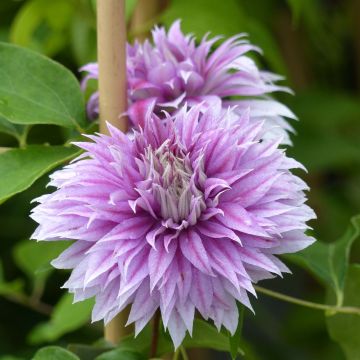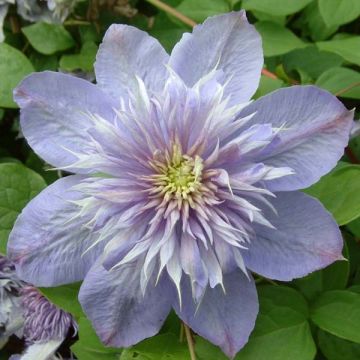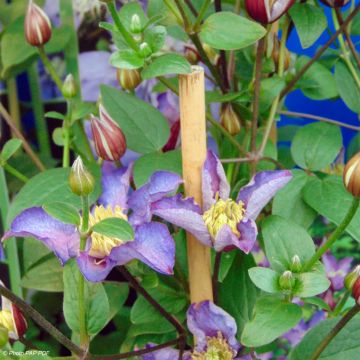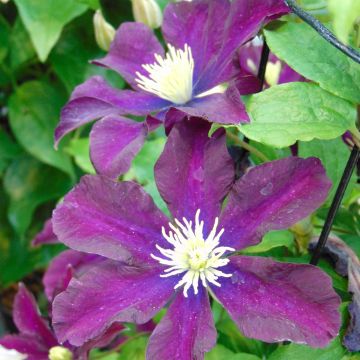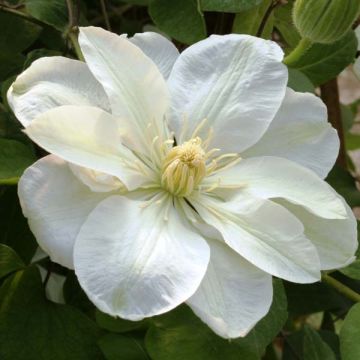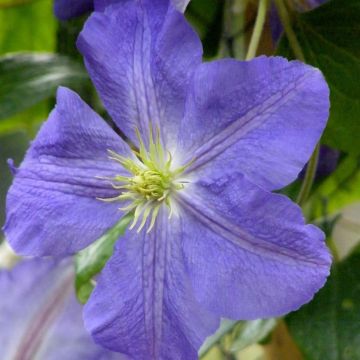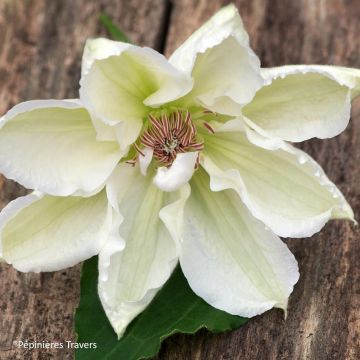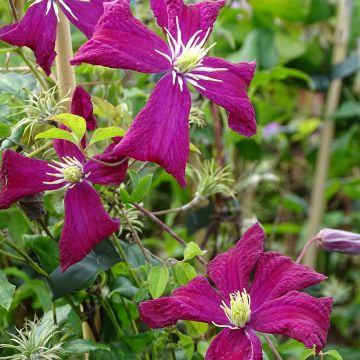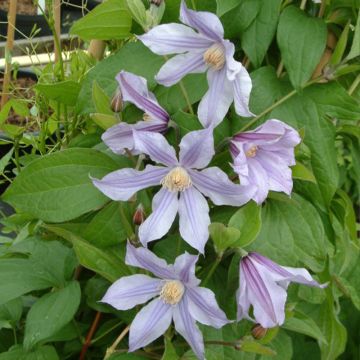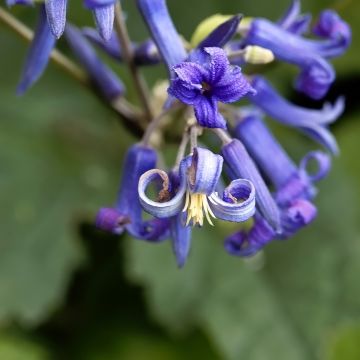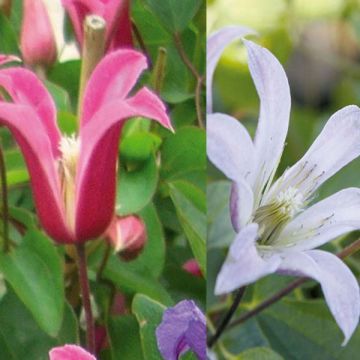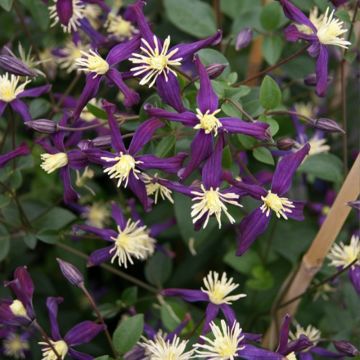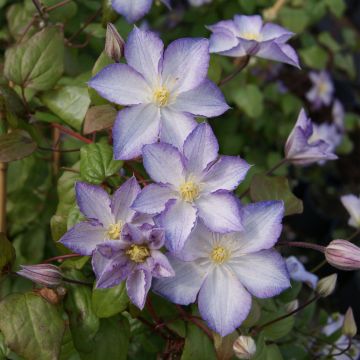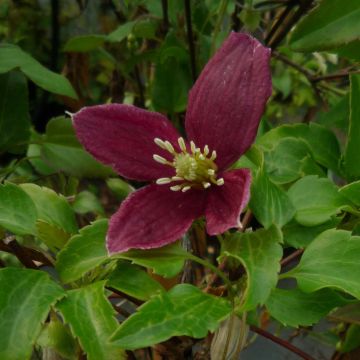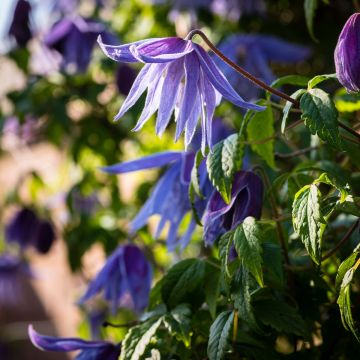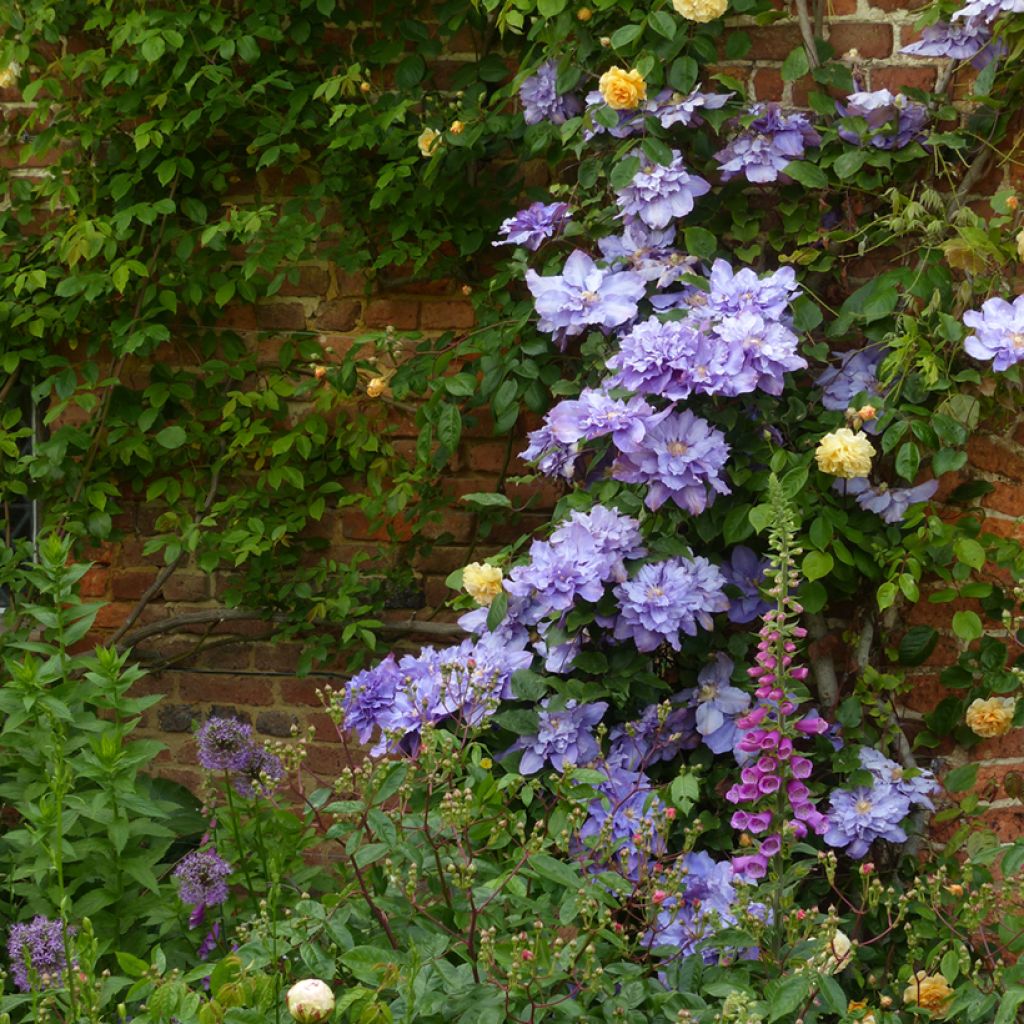

Clematis patens Diamantina
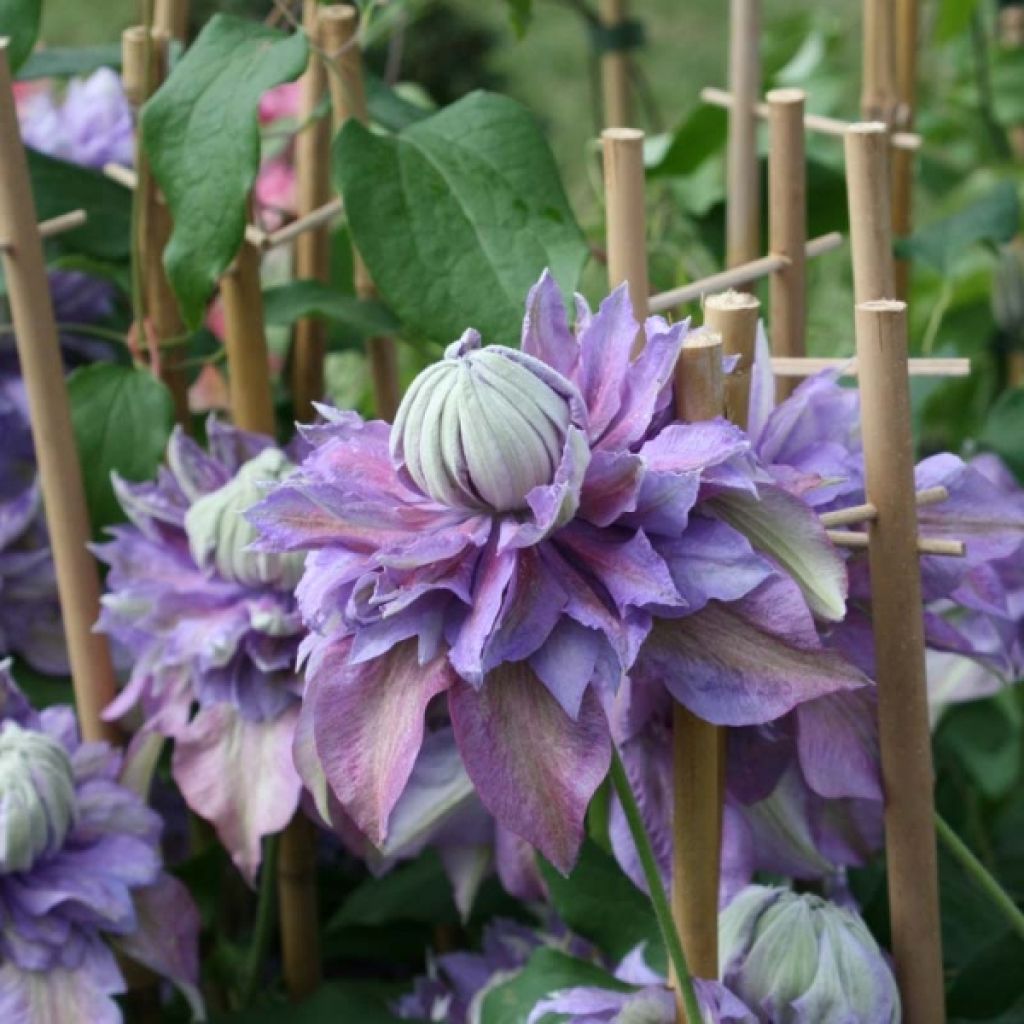

Clematis patens Diamantina
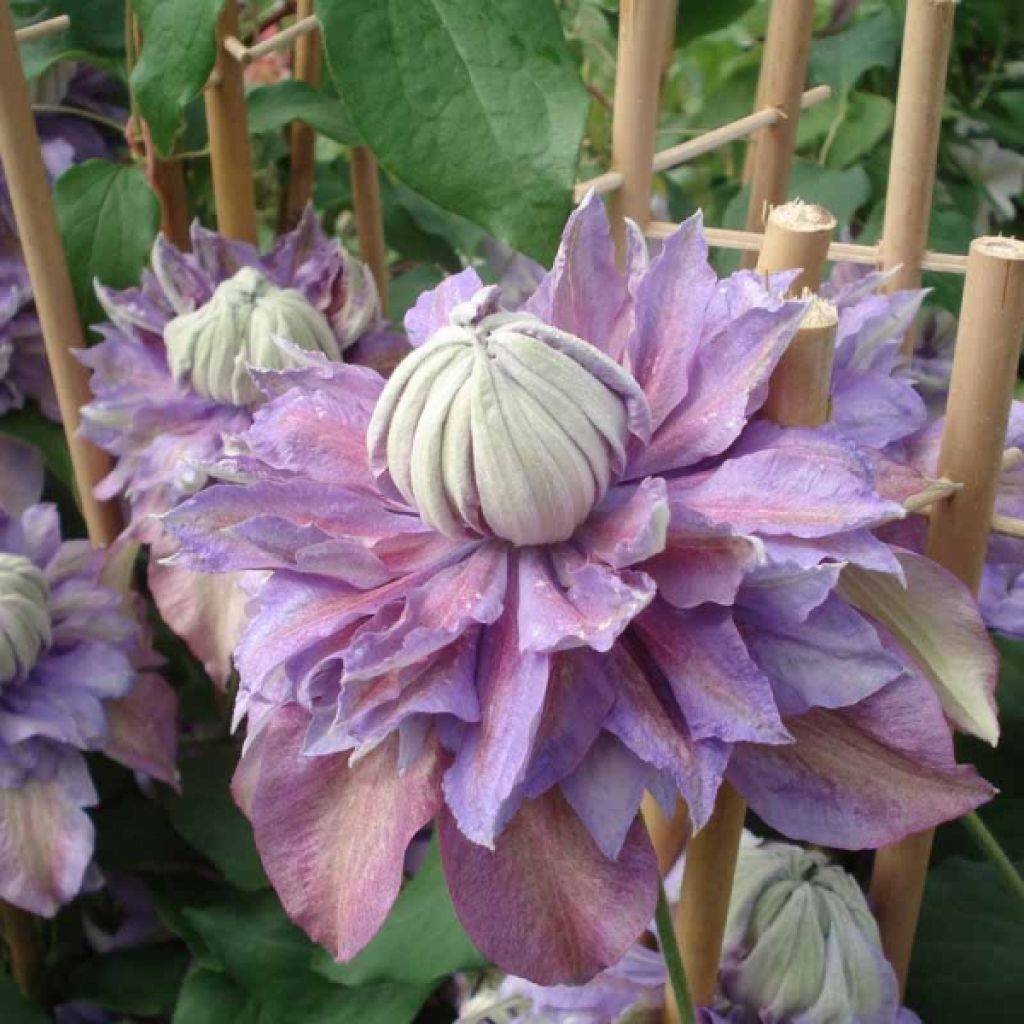

Clematis patens Diamantina
Clematis patens Diamantina
Clematis patens Diamantina 'Evipo039'
Clematis [Diamantina]
This item cannot be shipped to the selected country
Delivery charge from €5.90
More information
Schedule delivery date,
and select date in basket
This plant carries a 6 months recovery warranty
More information
We guarantee the quality of our plants for a full growing cycle, and will replace at our expense any plant that fails to recover under normal climatic and planting conditions.
From €5.90 for pickup delivery and €6.90 for home delivery
Express home delivery from €8.90.
Does this plant fit my garden?
Set up your Plantfit profile →
Description
Clematis Diamantina is a superb and uncommon climbing plant. At the end of spring, it produces double flowers in a bluish-purple shade. They display a slightly crumpled centre. The flowers reach up to 15cm (6in) in diameter. This gardening jewel will bring elegance and refinement in a container on a patio. It will look fabulous at the base of an arch, or even twining around a large bush. Grow it in rich, moist, and well-drained soil, in full sun or partial shade.
Clematis Diamantina belongs to the large Ranunculaceae botanical family, which includes various ornamental plants such as aconites, anemones, and ranunculus. Clematis have been of interest to flower enthusiasts for centuries, and nurseries have focused on creating increasingly opulent hybrids. Diamantina was obtained from C. patens, which originates from Japan. It is of medium size, reaching about 2 to 3m (7 to 10 ft) in height. It has large trifoliate leaves, meaning they are deeply divided into three lobes. Like the majority of climbing clematis, it clings to its support with petioles transformed into tendrils.
Clematis Diamantina is an English hybrid, obtained in 2007 by the nurseryman Raymond Evison. From May to June, it bears a multitude of mauve-blue flowers, 15cm (6in) wide. They last for 3 or 4 weeks. The double blooms have sumptuous mauve-blue petals, slightly washed with purple, and a frilly appearance. In the centre, the stamens are petal-like, transformed into petals. Upright and gathered in a pointed shape, these stamens form a very elegant crystal-like structure in the middle of the flower. A second wave of flowers will appear in September if the weather is mild.
The cultivation of Clematis Diamantina is rather easy: provide it with deep, fairly rich, loose, moist, and well-drained soil. The only truly dreaded disease for this clematis is wilt disease, which occurs when there is excessive moisture at the base. It is characterised by sudden wilting of the leaves. For most clematis, it is advisable to follow the motto "head in the sun, feet in the shade". While relatively significant sunshine is necessary for good flowering, it is wise to protect the base from intense sunlight. You can do this by placing a tile over the base. It is also recommended to plant the stump horizontally, to promote the emergence of several buds from the base of the plant. Every year, at the end of winter, you can prune every other stem to 50cm (20in) from the ground. This will regenerate the wood and increase flowering. Take the opportunity to remove dead wood.
For an optimal setting, provide the clematis with a suitable support. If grown in a pot, first ensure it is of sufficient size (at least 25cm (10in)). Then place something like a small trellis for support. In the garden, choose a pergola or an arch. Plant it with Scentsation honeysuckle, Actinidia kolomikta, or even a small tree like the Coccinella apple tree, which will all provide excellent support. It can also be left to run on the ground, emerging happily among perennials.
Report an error about the product description
Clematis patens Diamantina in pictures
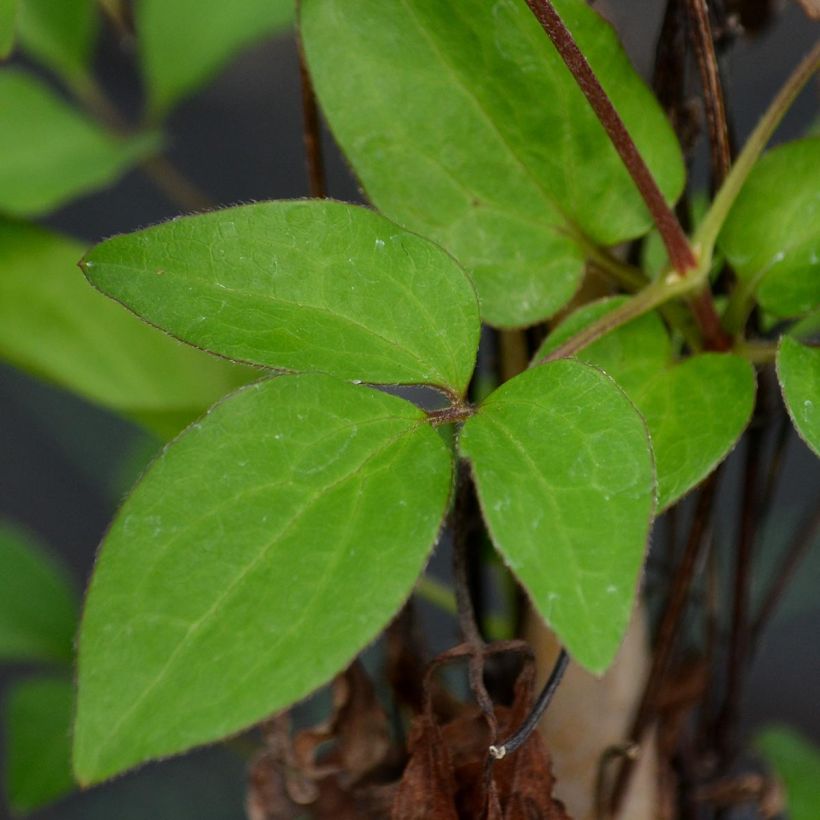

Plant habit
Flowering
Foliage
Botanical data
Clematis
patens
Diamantina 'Evipo039'
Ranunculaceae
Clematis [Diamantina]
Cultivar or hybrid
Other Clematis Patens
Planting and care
Choose a sunny or semi-shaded position. In a sunny position, shade the base of your plant with a ground cover plant or a perennial geranium. Clematis like to have their feet cool. Work the soil to a depth of 20cm (8in), and lighten it with good compost. Position the plant and cover the root ball with 3cm (1in) of soil. Water generously and regularly during the first few weeks.
Clematis can cling on their own with their tendrils. To promote their growth, provide them with a trellis support or let them dress the trunk of a tree by placing a wire mesh against the trunk for the clematis to grow on. Clematis also like to grow freely on neighbouring plants.
Planting period
Intended location
Care
-
, onOrder confirmed
Reply from on Promesse de fleurs
Clematis
Haven't found what you were looking for?
Hardiness is the lowest winter temperature a plant can endure without suffering serious damage or even dying. However, hardiness is affected by location (a sheltered area, such as a patio), protection (winter cover) and soil type (hardiness is improved by well-drained soil).

Photo Sharing Terms & Conditions
In order to encourage gardeners to interact and share their experiences, Promesse de fleurs offers various media enabling content to be uploaded onto its Site - in particular via the ‘Photo sharing’ module.
The User agrees to refrain from:
- Posting any content that is illegal, prejudicial, insulting, racist, inciteful to hatred, revisionist, contrary to public decency, that infringes on privacy or on the privacy rights of third parties, in particular the publicity rights of persons and goods, intellectual property rights, or the right to privacy.
- Submitting content on behalf of a third party;
- Impersonate the identity of a third party and/or publish any personal information about a third party;
In general, the User undertakes to refrain from any unethical behaviour.
All Content (in particular text, comments, files, images, photos, videos, creative works, etc.), which may be subject to property or intellectual property rights, image or other private rights, shall remain the property of the User, subject to the limited rights granted by the terms of the licence granted by Promesse de fleurs as stated below. Users are at liberty to publish or not to publish such Content on the Site, notably via the ‘Photo Sharing’ facility, and accept that this Content shall be made public and freely accessible, notably on the Internet.
Users further acknowledge, undertake to have ,and guarantee that they hold all necessary rights and permissions to publish such material on the Site, in particular with regard to the legislation in force pertaining to any privacy, property, intellectual property, image, or contractual rights, or rights of any other nature. By publishing such Content on the Site, Users acknowledge accepting full liability as publishers of the Content within the meaning of the law, and grant Promesse de fleurs, free of charge, an inclusive, worldwide licence for the said Content for the entire duration of its publication, including all reproduction, representation, up/downloading, displaying, performing, transmission, and storage rights.
Users also grant permission for their name to be linked to the Content and accept that this link may not always be made available.
By engaging in posting material, Users consent to their Content becoming automatically accessible on the Internet, in particular on other sites and/or blogs and/or web pages of the Promesse de fleurs site, including in particular social pages and the Promesse de fleurs catalogue.
Users may secure the removal of entrusted content free of charge by issuing a simple request via our contact form.
The flowering period indicated on our website applies to countries and regions located in USDA zone 8 (France, the United Kingdom, Ireland, the Netherlands, etc.)
It will vary according to where you live:
- In zones 9 to 10 (Italy, Spain, Greece, etc.), flowering will occur about 2 to 4 weeks earlier.
- In zones 6 to 7 (Germany, Poland, Slovenia, and lower mountainous regions), flowering will be delayed by 2 to 3 weeks.
- In zone 5 (Central Europe, Scandinavia), blooming will be delayed by 3 to 5 weeks.
In temperate climates, pruning of spring-flowering shrubs (forsythia, spireas, etc.) should be done just after flowering.
Pruning of summer-flowering shrubs (Indian Lilac, Perovskia, etc.) can be done in winter or spring.
In cold regions as well as with frost-sensitive plants, avoid pruning too early when severe frosts may still occur.
The planting period indicated on our website applies to countries and regions located in USDA zone 8 (France, United Kingdom, Ireland, Netherlands).
It will vary according to where you live:
- In Mediterranean zones (Marseille, Madrid, Milan, etc.), autumn and winter are the best planting periods.
- In continental zones (Strasbourg, Munich, Vienna, etc.), delay planting by 2 to 3 weeks in spring and bring it forward by 2 to 4 weeks in autumn.
- In mountainous regions (the Alps, Pyrenees, Carpathians, etc.), it is best to plant in late spring (May-June) or late summer (August-September).
The harvesting period indicated on our website applies to countries and regions in USDA zone 8 (France, England, Ireland, the Netherlands).
In colder areas (Scandinavia, Poland, Austria...) fruit and vegetable harvests are likely to be delayed by 3-4 weeks.
In warmer areas (Italy, Spain, Greece, etc.), harvesting will probably take place earlier, depending on weather conditions.
The sowing periods indicated on our website apply to countries and regions within USDA Zone 8 (France, UK, Ireland, Netherlands).
In colder areas (Scandinavia, Poland, Austria...), delay any outdoor sowing by 3-4 weeks, or sow under glass.
In warmer climes (Italy, Spain, Greece, etc.), bring outdoor sowing forward by a few weeks.

































